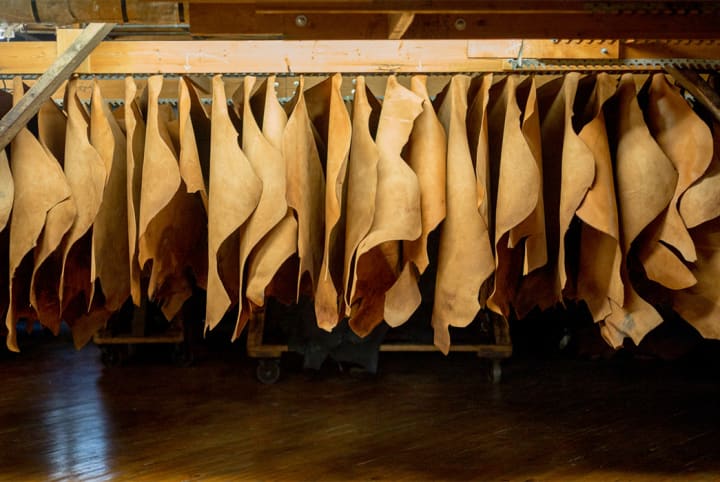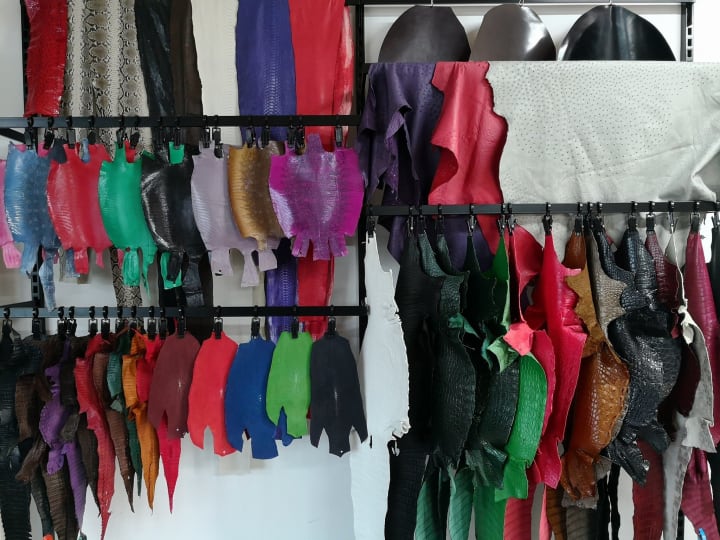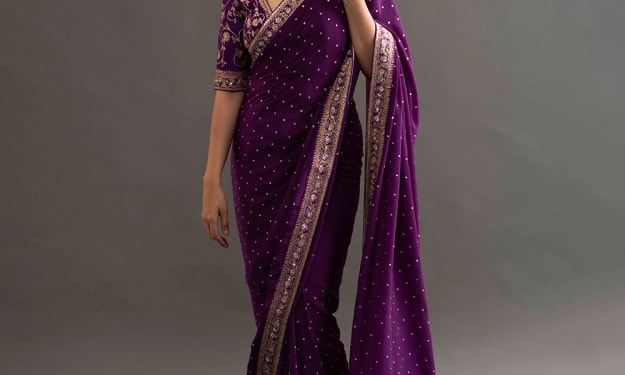
Humankind has been using leather since ancient times, the oldest known instance belonging to approximately 5000 B.C.E., when archaeologists uncovered wall paintings and artifacts such as clothing, sandals, gloves and military equipment being constructed out of leather.
The idea of leather is intuitive if you think about it. Humans and animals have eaten other animals since the beginning of humankind as we know it, so why wouldn't we put the rest of the animal to good use? Back before we found out about cotton (which was around 800 C.E.), we needed a way to stay warm. One of our ancestors probably looked at a cow, enjoyed the ribeye from it, felt cold at night, and thought, "If the cow can stay warm at night with it's skin, why not I use its skin to keep me warm?"
And voila, leather became a thing.
The process of getting leather is rather straightforward. Skin an animal, treat the leather (so it stays durable), and then craft with it. There are a million and one applications for leather, but today, let's talk about the types of leather.

The most common leather in the world is, without a doubt, cow leather. There's approximately 1.35 billion cattle throughout the world (holy cow!), and an average of 800,000 cows being slaughtered for consumption daily. As most tanneries get their hides as a byproduct of the meat industry, it makes sense that cow leather is the most common in the world. So much so, that cow leather accounts for approximately 65 - 70% of all leather goods in the world!
Cow leather is used most notably for furniture, car seats, shoe soles, belts, straps and saddles, among other things. Cow hide is most commonly known for its durability, as it is naturally thick and strong, just like the animal it comes from!
Calf skin is more supple, waxy and softer, making it more suitable for higher-end, smaller leather goods like wallets, card holders, and lining for other products.
But what about leather from other animals? Let's take a deeper look.

As an amateur leather craftsman, I come across lots of leather supply shops in Asia. In Singapore, I came across this shop, Europelle SG, that supplied plenty of exotic leathers. In a clockwise fashion, starting from the bottom right:
1. Alligator Leather, sourced from Florida, USA. (Farm-raised)
2. Beaver Leather, sourced from the USA. (Wild-caught in areas where they are an invasive species)
3. Crocodile Leather, sourced from Egypt. (Farm-raised)
4. Lizard Skin, sourced from Indonesia. (Wild-caught)
5. Python Leather, sourced from Southeast Asia. (Farm-raised & wild-caught).
6. Shell Cordovan (Fancy name for shiny horse buttcheeks), sourced from USA.
7. Ostrich Leather, sourced from South Africa. (Farm raised)

There are many forms of exotic leather out there. Ostrich legs, like above, are an example. If you're like me and spend too much time looking at the kinds of leathers are available out there, you will find there are even more exotic leathers, such as Salmon Skin, Arapaima Skin, and even Capybara Leather!
Different leathers have many different uses. High-end luxury brands such as Hermès use exotic alligator leather and Alran Chèvre (high-end goat leather). With it's beautiful bright luster, it is easy to see why people regard these leathers are used for high-end goods.
However, it is easy to adore a beautiful product and forgetting whether the leather is sourced responsibly and humanely. As such, I personally believe it is important to know your leather's source. We all play a part in the conservation of our planet, and one of the many ways we can do that is to not support suppliers who harvest leather irresponsibly.
All in all, there are many types of leather, and even more uses for them. As a leather craftsman, I've barely scratched the surface in the world of leather, and it is exciting and invigorating to know there are many types of leather for me to tinker with.
I hope this article has been informative and insightful for you as a reader! If you found this article interesting, please share it with your friends, or consider leaving a tip below. Thank you for reading!





Comments
There are no comments for this story
Be the first to respond and start the conversation.